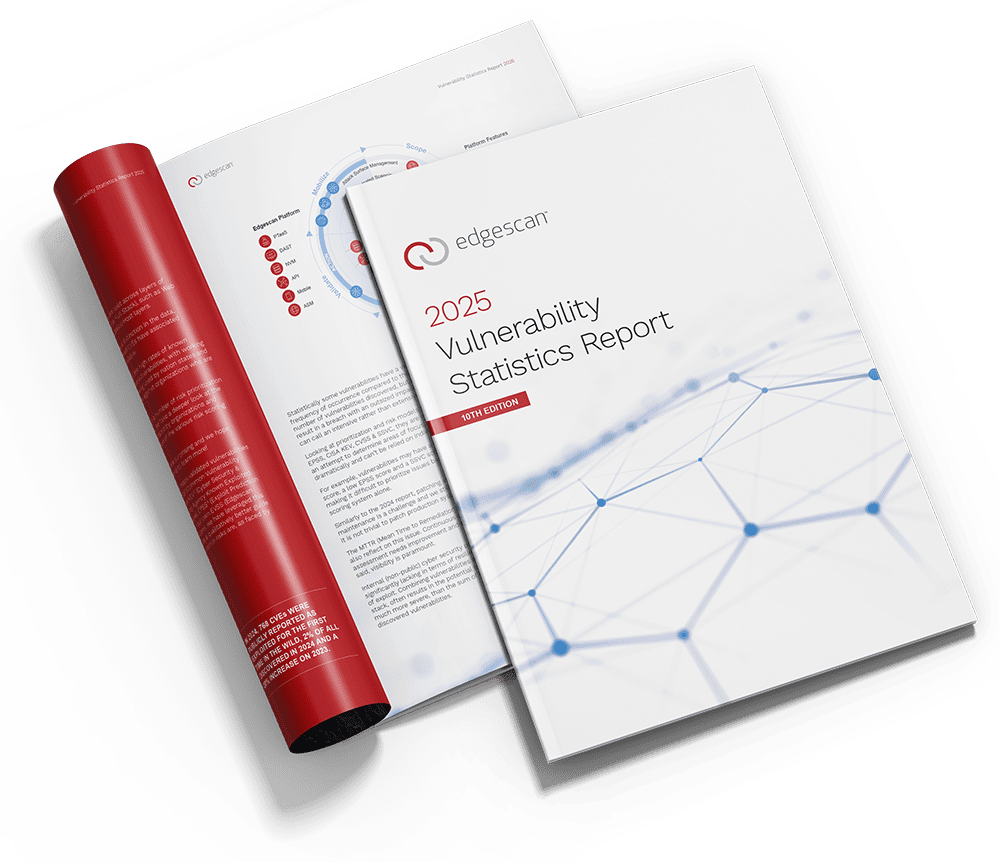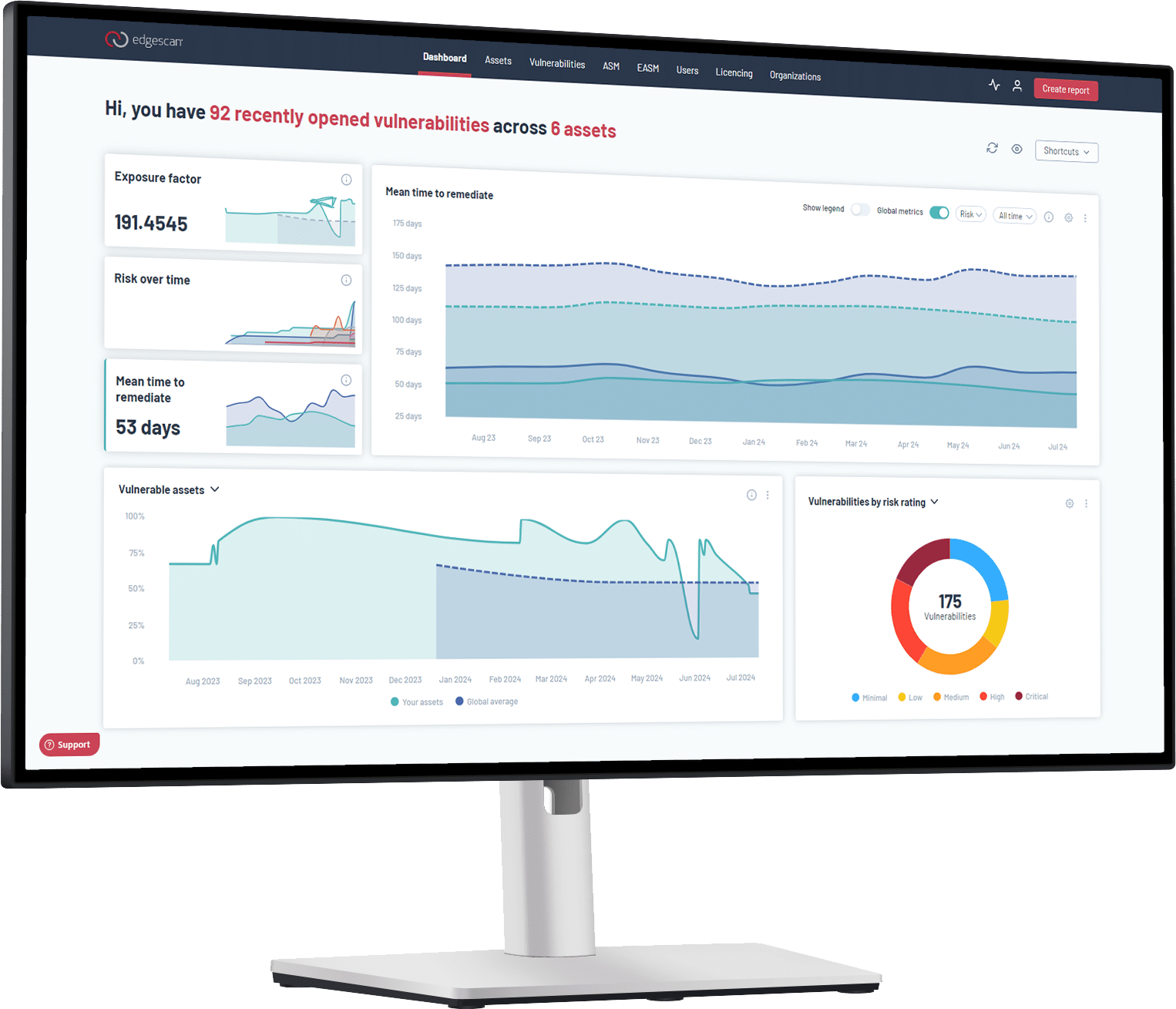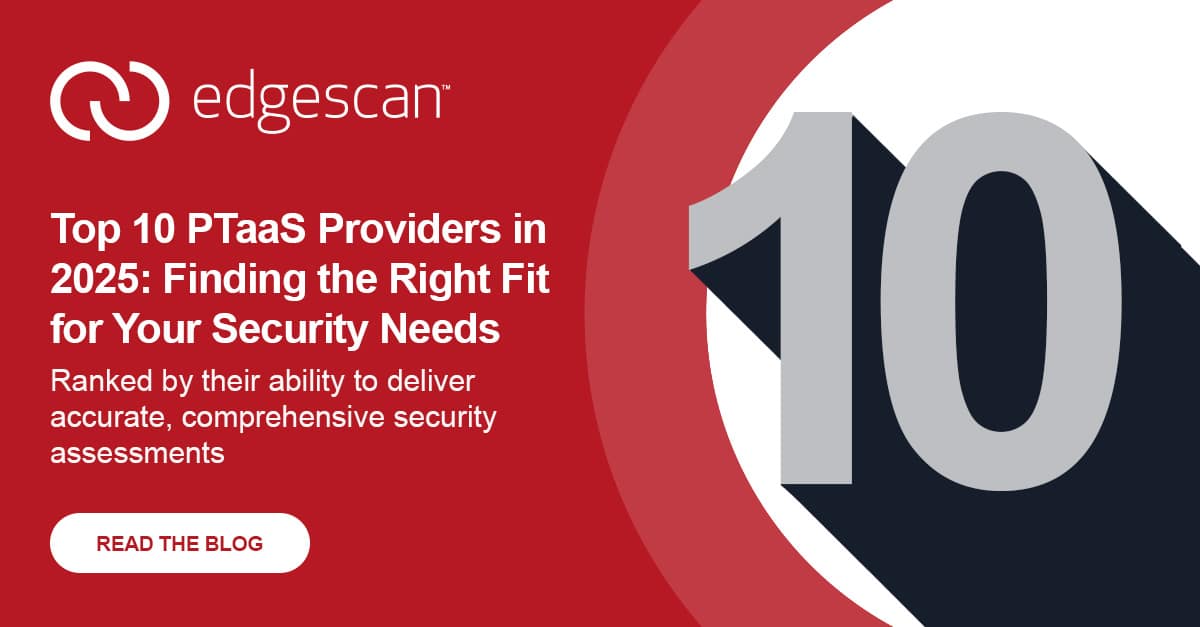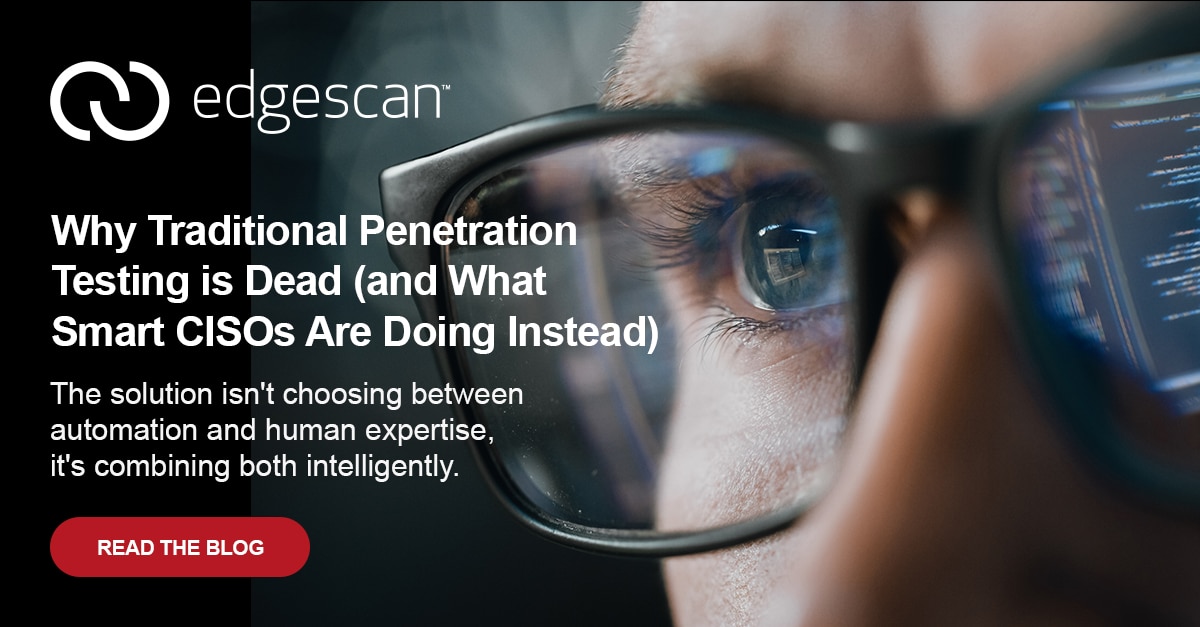Penetration Testing as a Service has become essential for organizations managing complex digital infrastructures.
- Modern PTaaS platforms combine automated scanning with expert human analysis to identify vulnerabilities across web applications, APIs, networks, and cloud environments.
- While automated tools excel at finding common vulnerabilities, the most dangerous threats often hide in business logic flaws and complex attack chains that only experienced security professionals can uncover.
Here are the top 10 PTaaS providers for 2025, ranked by their ability to deliver accurate, comprehensive security assessments.
1. Edgescan
Strengths: Full-stack coverage, business logic vulnerability detection, AI-driven accuracy
Best for: Enterprises requiring comprehensive security across all technology layers and dont like alert fatigue
Edgescan leads the field through its exceptional accuracy and comprehensive approach. The platform covers web applications, APIs, networks, cloud infrastructure environments with equal depth.
What sets Edgescan apart is its ability to discover business logic vulnerabilities – critical flaws in application workflows that automated scanners typically miss. These vulnerabilities often represent the highest business risk, as they exploit intended functionality rather than code errors. Edgescan also validates all discovered vulnerabilities using clever technology based on cyber analytics and expert human validation.
The AI-driven platform minimizes false positives while prioritizing actionable findings. Strong compliance alignment with standards like PCI-DSS and ISO 27001, SSVC, NIST LEV, CISA KEV, D3FEND and maps vulnerabilities to Ransomware hacks via CTI. This makes it particularly valuable for enterprises requiring precise, end-to-end security insights.
2. BreachLock
Strengths: AI-assisted prioritization, compliance focus, full-stack testing
Best for: Organizations with strong compliance requirements
BreachLock delivers comprehensive PTaaS with AI-assisted vulnerability prioritization across web, mobile, and internal networks. The platform excels in compliance-driven environments where audit requirements drive security testing schedules.
While effective for regulatory audits, its automation-heavy approach can miss the nuanced business logic vulnerabilities that require human insight to identify and exploit.
3. Cobalt
Strengths: Scalable testing, SDLC integration, global expert network
Best for: Development teams needing integrated security testing
Cobalt offers on-demand PTaaS through a global network of vetted ethical hackers, focusing on web, mobile, and API testing. Strong integration with software development lifecycles makes it popular with DevSecOps teams.
The platform’s collaborative tools facilitate communication between security testers and development teams. However, detection of business logic flaws varies depending on individual tester expertise rather than systematic methodology.
4. NetSPI
Strengths: Threat intelligence integration, cloud security focus, CI/CD pipeline integration
Best for: Cloud-native organizations with complex development workflows
NetSPI’s Resolve platform provides comprehensive testing for internal networks and cloud environments, enhanced by threat intelligence for improved accuracy. Strong CI/CD pipeline integration supports continuous security testing.
The platform handles cloud security testing well but lacks specialized focus on business logic flaw detection that characterizes more comprehensive solutions.
5. Rapid7
Strengths: Dynamic scanning, expert validation, compliance reporting
Best for: Organizations prioritizing application-layer security and regulatory compliance
Rapid7’s InsightAppSec and managed PTaaS services combine dynamic scanning with expert validation for web and API security. Reliable compliance reporting supports audit requirements.
The platform focuses primarily on application-layer vulnerabilities and may miss business logic flaws that require deeper application workflow analysis.
6. Synack
Strengths: Crowd-sourced expertise, continuous testing, automated orchestration
Best for: Organizations needing rapid vulnerability identification across large attack surfaces
Synack’s crowd-sourced model combines elite security researchers with automated orchestration for continuous testing across networks and cloud assets. Fast identification of exploitable vulnerabilities supports rapid response requirements.
The platform excels at finding technical vulnerabilities but may require additional configuration for comprehensive business logic testing or specialized environments like OT systems.
7. Astra Security
Strengths: OWASP compliance, AI-enhanced scanning, developer-friendly interface
Best for: Development teams focused on OWASP compliance and web application security
Astra combines intelligent scanning with expert-led testing for OWASP-compliant coverage of web applications, APIs, and mobile applications. AI-enhanced scanning improves efficiency over traditional automated tools.
The automation-heavy approach limits consistent identification of complex business logic vulnerabilities that require human analysis and creative testing approaches.
8. HackerOne
Strengths: Bug bounty integration, proactive vulnerability hunting, community expertise
Best for: Organizations extending bug bounty programs into structured testing
HackerOne extends its bug bounty platform expertise into structured PTaaS offerings, providing on-demand testing for applications and infrastructure. Strong focus on proactive vulnerability hunting.
While the platform leverages community expertise effectively, it lacks the systematic depth for business logic and full-stack testing that enterprise environments often require.
9. Bugcrowd
Strengths: High-velocity testing, real-world exploit simulation, community-driven insights
Best for: Organizations needing rapid testing cycles with real-world attack perspectives
Bugcrowd’s PTaaS leverages a crowdsourced security community for high-velocity testing across web, mobile, and API surfaces. Strong simulation of real-world exploits provides practical security insights.
Detection of business logic vulnerabilities varies significantly due to the community-driven model, making results less predictable for complex application workflows.
10. Pentera
Strengths: Automated breach simulation, network focus, attack path analysis
Best for: Organizations prioritizing network security and breach simulation
Pentera’s automated breach-and-simulate platform mimics real attacks across networks and endpoints. Effective for understanding attack paths and network-level security gaps.
Heavy reliance on automation makes it less suitable for identifying business logic vulnerabilities that require human insight and creative testing methodologies.
Choosing the Right PTaaS Provider
The best PTaaS provider depends on your specific security needs and organizational context. Consider these factors:
Accuracy: Do you want a stream of validated vulnerabilities which are risk rated and prioritized based on cyber threat intelligence?
Coverage Requirements: Do you need full-stack testing or specific technology focus? Applications, networks, cloud, and OT environments each present unique challenges.
Vulnerability Types: Technical vulnerabilities are easy to discover with automation, but business logic flaws require context and a “human touch”. If your applications handle sensitive business workflows, prioritize providers with strong business logic testing capabilities.
Compliance Needs: Different industries require different compliance frameworks. Ensure your provider aligns with relevant standards and reporting requirements.
Integration Requirements: Consider how PTaaS fits into your development and security workflows. Some organizations need deep CI/CD integration, while others prioritize standalone assessment capabilities.
Testing Frequency: Continuous testing models work differently than periodic assessments. Match provider capabilities to your operational requirements.
The Business Logic Advantage
The most critical differentiator among PTaaS providers is their ability to identify business logic vulnerabilities. These flaws exploit intended application functionality and often represent the highest business risk.
While automated scanning can identify technical vulnerabilities like SQL injection or cross-site scripting, business logic flaws require human experts who understand application workflows and can think like attackers. This capability separates comprehensive security testing from basic vulnerability scanning.
Organizations handling sensitive business processes, financial transactions, or critical workflows should prioritize PTaaS providers with proven business logic testing capabilities.
Ready to evaluate PTaaS providers for your organization? Start here.







